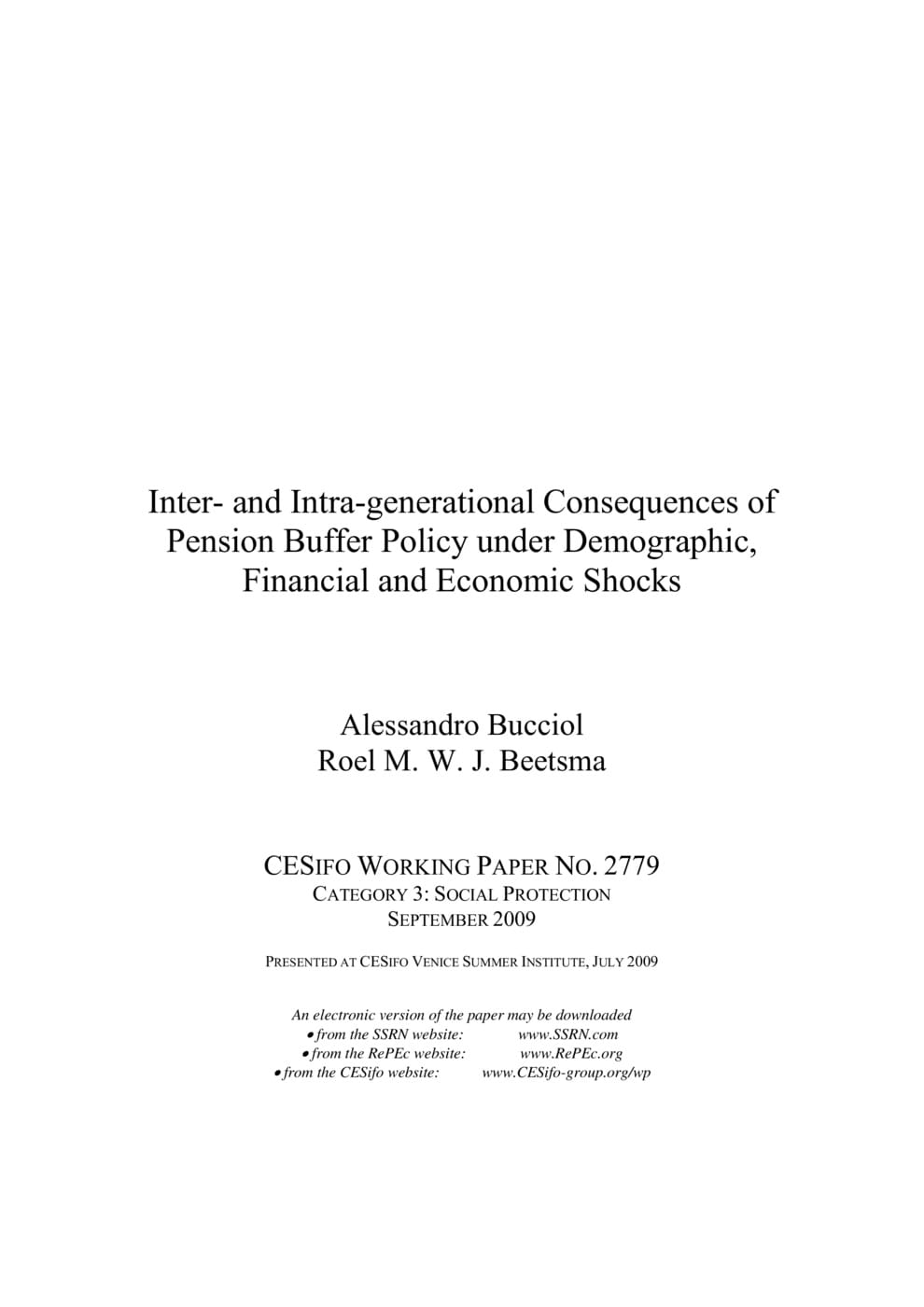Inter- and Intra-generational Consequences of Pension Buffer Policy under Demographic, Financial and Economic Shocks
CESifo, Munich, 2009
CESifo Working Paper No. 2779

We study numerically the inter- and intra-generational welfare consequences of alternative pension fund policies in response to unexpected demographic, financial and macro-economic shocks. Our analysis is based on an applied many-generation OLG model describing a small-open economy with heterogeneous agents featuring a two-pillar pension system (with PAYG and funded tiers). We explore two policies to avoid underfunding of the pension funds. One is to always first raise the pension contribution rate ("contribution policy"), the other is to always first reduce indexation to productivity and price inflation ("indexation policy"). These policies have different consequences for different generations. Of the existing generations, on average the youngest prefer the indexation policy, while the older generations prefer the con-tribution policy. When expressed in terms of a constant difference in rest-of-life consumption the consequences of switching from one to the other policy are generally non-negligible. They also differ rather widely for the various cohort/income groups. Our stochastic simulations show that pension buffers are highly volatile when the shocks are drawn from realistically modelled multivariate shock processes. Underfunding occurs relatively frequently. Most of the volatility arises from uncertainty about the yield curve (the rate at which pension liabilities are discounted).
Social Protection